
Keserwan: The Gem of Lebanon's Mountains and Coastline
Discover Keserwan District, where Lebanon's mountains meet the Mediterranean Sea, offering a perfect blend of ancient history, natural beauty, and vibrant culture.
Nestled between the breathtaking Lebanese mountains and the sparkling Mediterranean Sea, Keserwan District offers a unique blend of natural beauty, rich history, and vibrant culture. Known for its picturesque villages, ancient ruins, and stunning landscapes, Keserwan is a must-visit destination for travelers seeking an authentic Lebanese experience. Begin your journey with a visit to the famed Jeita Grotto, an awe-inspiring network of limestone caves that stretches over 9 kilometers. The upper galleries and lower river caves provide a surreal experience, showcasing nature's artistry in the form of stalactites and stalagmites. Nearby, Harissa offers a spiritual retreat with its towering Our Lady of Lebanon statue, accessible via a scenic cable car ride that provides panoramic views of the coast and mountains. For history enthusiasts, the ruins of Byblos, one of the oldest continuously inhabited cities in the world, are just a short drive away. Wander through ancient streets, explore the Crusader Castle, and visit the old souks to get a glimpse of Lebanon's rich past. The district is also home to a number of charming villages like Faraya and Faqra, where you can enjoy skiing in the winter and hiking in the summer, all while indulging in delicious local cuisine and warm hospitality. Keserwan is not just about nature and history; it also boasts a lively nightlife and a variety of festivals throughout the year. From beach clubs in Jounieh to wine festivals in the mountains, there's always something happening in this vibrant district. Whether you're a thrill-seeker, a culture buff, or someone looking to relax and unwind, Keserwan has something to offer everyone.
Local tips in Keserwan District
- Visit Jeita Grotto early in the morning to avoid crowds and fully enjoy the serene atmosphere.
- Take the Téléférique (cable car) to Harissa for stunning views of the coast and mountains.
- Wear comfortable shoes when exploring the ruins of Byblos, as the ancient streets can be uneven.
- Check the local festival calendar to experience cultural events and celebrations during your visit.
- Try local dishes at village restaurants for an authentic taste of Lebanese cuisine.
Keserwan: The Gem of Lebanon's Mountains and Coastline
Nestled between the breathtaking Lebanese mountains and the sparkling Mediterranean Sea, Keserwan District offers a unique blend of natural beauty, rich history, and vibrant culture. Known for its picturesque villages, ancient ruins, and stunning landscapes, Keserwan is a must-visit destination for travelers seeking an authentic Lebanese experience. Begin your journey with a visit to the famed Jeita Grotto, an awe-inspiring network of limestone caves that stretches over 9 kilometers. The upper galleries and lower river caves provide a surreal experience, showcasing nature's artistry in the form of stalactites and stalagmites. Nearby, Harissa offers a spiritual retreat with its towering Our Lady of Lebanon statue, accessible via a scenic cable car ride that provides panoramic views of the coast and mountains. For history enthusiasts, the ruins of Byblos, one of the oldest continuously inhabited cities in the world, are just a short drive away. Wander through ancient streets, explore the Crusader Castle, and visit the old souks to get a glimpse of Lebanon's rich past. The district is also home to a number of charming villages like Faraya and Faqra, where you can enjoy skiing in the winter and hiking in the summer, all while indulging in delicious local cuisine and warm hospitality. Keserwan is not just about nature and history; it also boasts a lively nightlife and a variety of festivals throughout the year. From beach clubs in Jounieh to wine festivals in the mountains, there's always something happening in this vibrant district. Whether you're a thrill-seeker, a culture buff, or someone looking to relax and unwind, Keserwan has something to offer everyone.
When is the best time to go to Keserwan District?
Iconic landmarks you can’t miss
Zaituna Bay
Discover the vibrant Zaituna Bay, Beirut's premier promenade for breathtaking views, delightful dining, and a taste of Lebanese culture along the coast.

Al Raouche Rocks
Discover Al Raouche Rocks, a breathtaking natural landmark in Beirut, where stunning limestone formations meet the Mediterranean's shimmering waters.

Jeita Grotto
Explore Jeita Grotto, Lebanon's stunning limestone caves and underground river, a breathtaking natural wonder near Beirut that enchants every visitor.

Baalbek Roman Ruins
Explore the grandeur of the Baalbek Roman Ruins, an ancient wonder showcasing the legacy of Roman architecture and history in Lebanon.

Cedars of God Bsharri
Discover the timeless beauty and historical significance of the Cedars of God in Bsharri, a UNESCO World Heritage site nestled in Lebanon's breathtaking mountains.

Byblos Citadel
Discover the historical wonders of Byblos Citadel, an archaeological gem that reveals Lebanon's ancient past overlooking the Mediterranean Sea.

Beiteddine Palace
Explore Beiteddine Palace, a stunning historical landmark in Lebanon renowned for its exquisite architecture, rich history, and breathtaking gardens.
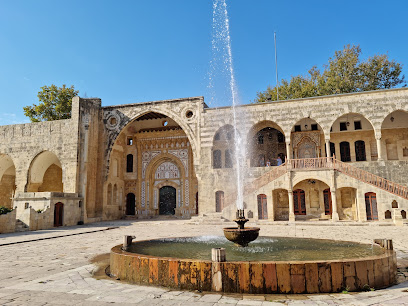
Balou3 Balaa Rest House
Experience the breathtaking beauty of Balou3 Balaa Rest House, a nature preserve featuring stunning waterfalls and picturesque trails in Chatin, Lebanon.

Jabal Moussa Biosphere Reserve - Chouwan Entrance
Discover the natural beauty and biodiversity of Jabal Moussa Biosphere Reserve in Lebanon, a sanctuary for nature lovers and outdoor enthusiasts alike.

Fouad Chehab Stadium
Discover the excitement of Fouad Chehab Stadium, Lebanon's premier sports destination, blending rich history with stunning coastal views.

Afqa Waterfall
Explore the breathtaking Afqa Waterfall, a natural wonder in Lebanon surrounded by lush landscapes and rich biodiversity.

Punta Del Este
Explore the culinary delights of Punta Del Este, where fresh seafood and Lebanese flavors create an unforgettable dining experience in a beautiful coastal setting.

Fortress of Niha
Explore the rich history and stunning views of the Fortress of Niha, an ancient gem nestled in the Lebanese mountains, perfect for history enthusiasts and nature lovers.

Shouf Cedars
Explore Shouf Cedars, a stunning nature preserve in Ain Zhalta, Lebanon, renowned for its ancient cedar trees and breathtaking natural beauty.
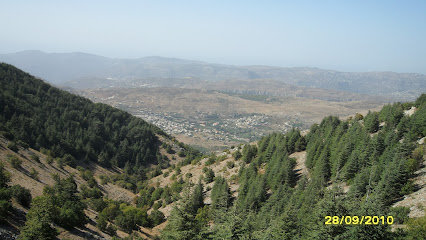
Yahchouch Camp
Experience the tranquility of Yahchouch Camp, a serene retreat in the Lebanese mountains, perfect for adventure and relaxation.

Unmissable attractions to see
Dream Park
Experience the thrill of Dream Park, Lebanon's premier amusement park, where adventure awaits for all ages amidst stunning landscapes.

Dino City Prehistoric Park
Experience the thrill of the prehistoric era at Dino City Prehistoric Park, a family-friendly amusement park in Ajaltoun, Lebanon, filled with life-sized dinosaur replicas and exciting rides.

Hall Of Fame
Discover the rich heritage and remarkable achievements at the Hall of Fame in Mazraat El Ras, a captivating museum celebrating local culture.

Our Lady Of Assistance
Discover the serene beauty and spiritual legacy of Our Lady Of Assistance in Zouq Mkayel, a must-visit church for travelers seeking peace and reflection.

The Park, Ain Aar
Discover the serene beauty of The Park, Ain Aar, an enchanting refuge filled with nature's wonders and vibrant experiences in Lebanon.

Chahtoul Camping
Discover the beauty of nature at Chahtoul Camping, a perfect retreat for families and adventure seekers in Lebanon.
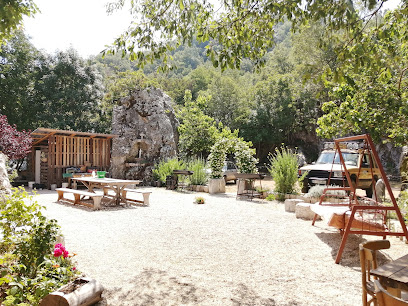
ProX Riding Club
Experience the thrill of adventure in Kfardebian with ProX Riding Club's top-notch ATV and snowmobile rentals amidst stunning mountain landscapes.
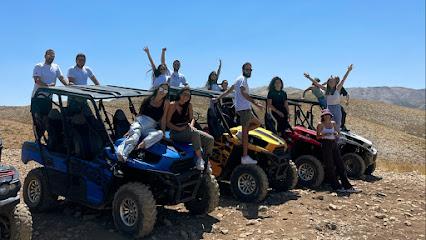
Old Souk Zouk Mikael
Experience the vibrant culture and history of Lebanon at Old Souk Zouk Mikael, a charming museum filled with art, crafts, and culinary delights.

Jardin ecologique
Explore the serene beauty of Jardin Ecologique, a community garden in Ballouneh, Lebanon, where nature thrives and tranquility awaits.

Beirut Paragliding by Omar Singer
Experience the thrill of paragliding over Beirut's stunning landscapes and the Mediterranean coastline for an unforgettable adventure.

Association for the Protection of Jabal Moussa (APJM)
Explore the breathtaking landscapes and rich biodiversity of Jabal Moussa National Park, a UNESCO Biosphere Reserve in Lebanon.

Wadi El Salib
Explore the breathtaking landscapes of Wadi El Salib, a serene hiking area in Deir Chamra, perfect for nature lovers and adventurers alike.

Divine mercy shrine lebanon
Explore the Divine Mercy Shrine in Lebanon: A serene museum of faith, art, and natural beauty perfect for spiritual seekers and cultural enthusiasts.

O Park
Discover tranquility at O Park, a beautiful sanctuary in Jounieh perfect for picnics, strolls, and nature exploration.

Musée de l'Indépendance - متحف الإستقلال
Uncover Lebanon’s journey to independence at Musée de l'Indépendance, a gem of history and culture in Haret Sakher.
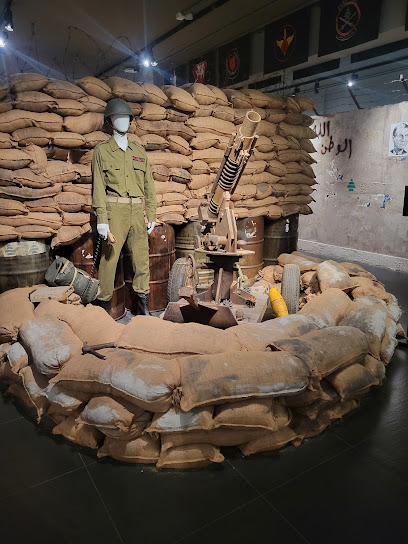
Essential places to dine
Manuella
Experience exceptional Lebanese and seafood cuisine at Manuella in Jounieh with breathtaking sea views.

Amar Harissa - قمر
Discover the essence of Lebanese cuisine at Amar Harissa on Harissa Highway, where breathtaking views meet unforgettable flavors.

La Crêperie
Experience delightful Lebanese and French crepes at La Crêperie in Sarba – a must-visit for food enthusiasts exploring Lebanon.

Al Sultan Brahim
Experience authentic Lebanese seafood at Al Sultan Brahim in Jounieh Bay - where freshness meets tradition in every bite.

Le Canoe
Experience exquisite seafood and Lebanese cuisine at Le Canoe in Zouk Mosbeh – where every meal is a celebration of flavor.
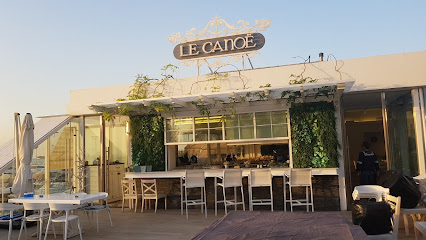
Makhlouf
Discover authentic Lebanese cuisine at Makhlouf in Haret Sakher - a must-visit restaurant for food lovers.

Chez Zakhia
Experience authentic Lebanese cuisine at Chez Zakhia in Jounieh – where fresh seafood meets traditional flavors in a charming setting.

Falafel Abou André
Experience authentic Lebanese flavors at Falafel Abou André in Jounieh - where delicious falafel meets warm hospitality.

مناظر
Discover Manazir: A Culinary Gem in Lebanon Serving Authentic Lebanese Cuisine in an Inviting Atmosphere.

Sanferien
Experience the authentic taste of Lebanon at Sanferien on Casino Du Liban Street - where culinary excellence meets stunning seaside views.
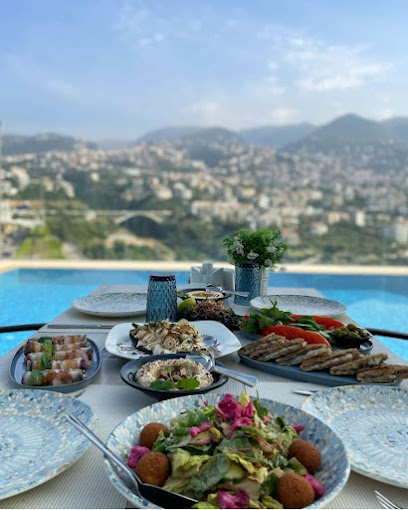
Makhlouf Sur Mer
Experience authentic Lebanese cuisine with stunning sea views at Makhlouf Sur Mer in Juniyah.

H village
Explore H Village in Jounieh for an unforgettable dining experience blending local flavors with stunning coastal views.

Stone Restaurant & Lounge
Discover the flavors of Lebanon at Stone Restaurant & Lounge in Zouk Mkayel, where culinary excellence meets stunning views.

Al Phenic
Discover exquisite Lebanese cuisine and fresh seafood at Al Phenic in Jounieh—where every meal is a celebration by the Mediterranean Sea.

Les Tziganes Restaurant
Experience the vibrant flavors of Europe and Lebanon at Les Tziganes Restaurant in Jounieh – where every meal is a celebration.

Markets, malls and hidden boutiques
Nakhle.Ets Kaslik
Explore the latest trends at Nakhle.Ets Kaslik, a premier women's clothing store in Sarba, offering stylish selections and exceptional service.

JOSONS
Discover top-quality sporting goods at JOSONS in Jounieh, Lebanon, your one-stop shop for outdoor adventures and activities.

Vertico
Explore Vertico in Jounieh for trendy women's fashion that combines style and affordability, perfect for every occasion.

Souvenirs of Our Lady of Lebanon Harissa
Explore the spiritual essence of Lebanon at Souvenirs of Our Lady of Lebanon in Harissa, where devotion meets artisanal craftsmanship.

Brands & Beyond Jounieh
Shop at Brands & Beyond Jounieh for unbeatable deals on top brands in a stunning coastal setting.
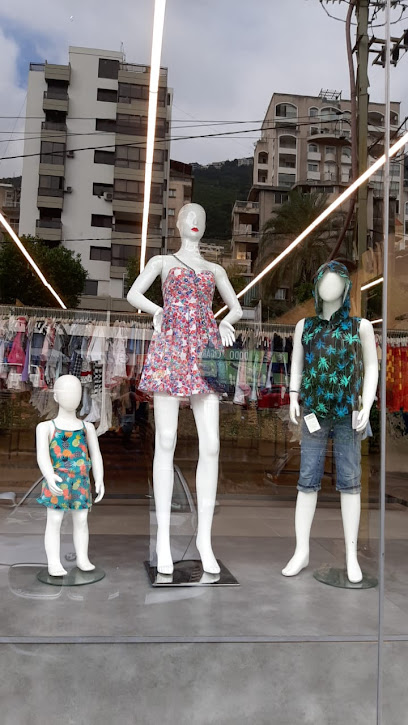
Cosmo Leb
Discover the elegance of Lebanese fashion at Cosmo Leb, a premier clothing store in Kaslik offering luxurious styles and local craftsmanship.

Guangzhou Stores
Explore Guangzhou Stores in Jounieh for an exceptional shopping experience, offering a wide selection of home goods at affordable prices.

Boutique du Monde | Kfarhabab
Explore Boutique du Monde in Kfarhabab for unique home goods that blend tradition and modernity, perfect for any discerning shopper.
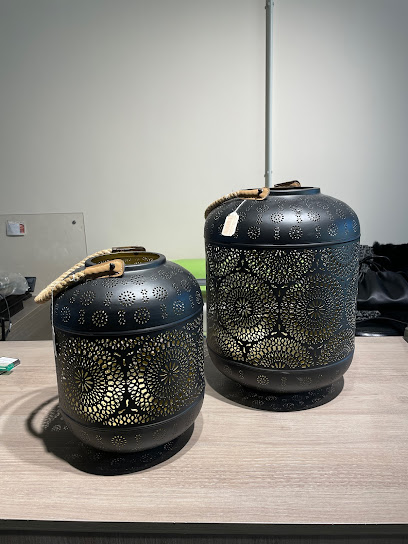
The CMY Shop
Discover unique home goods that celebrate Lebanese craftsmanship at The CMY Shop in Beirut, perfect for gifts and personal treasures.

Boutique du Monde | Zouk Mosbeh
Discover the charm of Boutique du Monde in Zouk Mosbeh, offering unique gifts, home goods, and stylish outdoor furniture that reflect Lebanon's rich culture.

Amiflora - Souaid Pour Le Commerce Et L'agriculture
Discover unique home goods and local crafts at Amiflora in Jounieh, a must-visit destination for home decor enthusiasts and souvenir seekers.

Legend Boutique
Explore the unique fashion offerings at Legend Boutique in Sarba, where local style meets personalized shopping in a welcoming atmosphere.

Chalhoub Watches
Explore luxury and elegance at Chalhoub Watches in Jounieh, where timepieces tell stories of craftsmanship and style.

Sparkles_bath
Explore Sparkles_bath: A Treasure Trove of Unique Souvenirs and Local Artistry Awaiting Your Discovery.

KAYA Babies Space
Discover KAYA Babies Space in Jounieh, the ultimate destination for quality baby products and a delightful shopping experience for families.

Essential bars & hidden hideouts
Hooligans Bar and Grill
Experience the lively ambiance and delectable grilled cuisine at Hooligans Bar and Grill in Jounieh, Lebanon – a perfect spot for food lovers and socializers.

Olen bar
Discover breathtaking sunsets and vibrant nightlife at Olen Bar in Jounieh, Lebanon's premier lounge and pub destination.

Tonic pub
Experience the lively atmosphere of Tonic Pub in Jounieh, where great drinks and local nightlife come together for an unforgettable evening.

Fertil pub
Discover the vibrant atmosphere and stunning coastal views at Fertil Pub, the perfect destination for relaxation and socializing.

Los Dos Bar
Experience the vibrant nightlife at Los Dos Bar in Jounieh, where exquisite cocktails and stunning sea views come together for an unforgettable evening.

Rumours Bar
Discover the lively nightlife of Jounieh at Rumours Bar, a trendy pub offering delicious drinks and vibrant entertainment in a stylish setting.

Don Jose Lounge Bar
Experience elegance and relaxation at Don Jose Lounge Bar in Jounieh, where sophisticated beverages meet a stunning ambiance.

Pura Vida Costa Rican Resto-Bar
Discover the vibrant flavors and lively atmosphere of Pura Vida Costa Rican Resto-Bar in Ghazir – a true taste of Costa Rica awaits you!

The momento bar
Experience the vibrant nightlife of Jounieh at The Momento Bar, where great drinks and a lively atmosphere await every visitor.

The brothers lb
Experience the vibrant nightlife of Jounieh at The Brothers LB, where cocktails and camaraderie meet stunning views and local hospitality.

Krov Bar
Experience the vibrant nightlife at Krov Bar in Jounieh, where great drinks meet lively atmosphere and unforgettable memories.
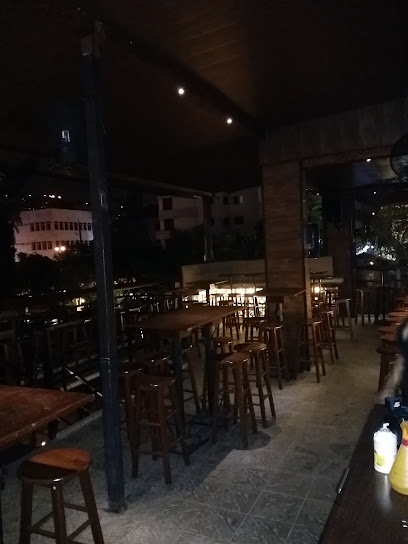
ESCO-BAR Faqra
Discover the lively ambiance and breathtaking views at ESCO-BAR Faqra, the perfect spot for relaxation and enjoyment in the heart of Lebanon.

Speakeasy On The Roof
Discover the stunning rooftop bar in Ghazir, where exquisite cocktails meet breathtaking views for an unforgettable evening.

Le Privé.
Discover the vibrant nightlife and local flavors at Le Privé, a lively pub and restaurant in the heart of Sahel Aalma.

Philos
Experience the vibrant nightlife of Sahel Aalma at Philos, a bar offering a unique atmosphere and delightful local drinks.

Local Phrases about Keserwan District
-
- HelloMarhaba
[mar-ha-ba] - GoodbyeMa'a as-salama
[ma-a as-sa-la-ma] - YesNa'am
[na-am] - NoLa
[la] - Please/You're welcomeMin fadlik
[min fad-lik] - Thank youShukran
[shuk-ran] - Excuse me/SorrySamahni
[sa-mah-ni] - How are you?Kifak?
[ki-fak] - Fine. And you?Mni7. W inta?
[mni-seb. w in-ta] - Do you speak English?Bitetkallem Englizi?
[bi-tet-kal-lem en-gli-zi] - I don't understandMa fhemt
[ma-fhemt]
- HelloMarhaba
-
- I'd like to see the menu, pleaseBaddi shuf il menu, min fadlik
[bad-di shuf il me-nu, min fad-lik] - I don't eat meatMa bakkol lahme
[ma bak-kol lah-me] - Cheers!Saha!
[sa-ha] - I would like to pay, pleaseBaddi as2al, min fadlik
[bad-di as-kal, min fad-lik]
- I'd like to see the menu, pleaseBaddi shuf il menu, min fadlik
-
- Help!3awni!
['aw-ni] - Go away!Il3ab!
[il-ab] - Call the Police!Il3ab bi il bulis!
[il-ab bi il bu-lis] - Call a doctor!Il3ab bi il tabib!
[il-ab bi il ta-bib] - I'm lostGhilt
[ghilt] - I'm illAna mareed
[a-na ma-reed]
- Help!3awni!
-
- I'd like to buy...Baddi ishteri...
[bad-di ish-te-ri] - I'm just lookingAna bas bi shuf
[a-na bas bi shuf] - How much is it?Bi kam?
[bi kam] - That's too expensiveHada ghali kteer
[ha-da gha-li kteer] - Can you lower the price?Mumkin ttakhed il se3r?
[mum-kin tta-khed il se-er]
- I'd like to buy...Baddi ishteri...
-
- What time is it?Kam il sa3a?
[kam il sa-a] - It's one o'clockSaa wahde
[sa-a wah-de] - Half past (10)Nus il 3ashra
[nus il a-shra] - MorningSaba7
[sa-ba-seb] - AfternoonDuhur
[du-hur] - Evening3asha
['a-sha] - YesterdayImbarih
[im-ba-rih] - TodayLyom
[lyom] - TomorrowBukra
[buk-ra] - 1Wahad
[wa-had] - 2Jou
[jou] - 3Talata
[ta-la-ta] - 4Arba3a
[ar-ba-a] - 5Khamse
[kham-se] - 6Sitta
[sit-ta] - 7Sabe3a
[sa-be-a] - 8Thamania
[tha-ma-nia] - 9Tisa3a
[ti-sa-a] - 103ashra
['a-shra]
- What time is it?Kam il sa3a?
-
- Where's a/the...?Wayn il...
[wayn il] - What's the address?Shou il 3enwan?
[shu il en-wan] - Can you show me (on the map)?Mumkin turiini (3ala il khareeta)?
[mum-kin tu-ri-ni (a-la il kha-ree-ta)] - When's the next (bus)?Ish sa3a il bus it7e3?
[ish sa-a il bus it-he] - A ticket (to ....)Talabit (ila ...)
[ta-la-bit (ila)]
- Where's a/the...?Wayn il...
History of Keserwan District
-
The Keserwan District, nestled along the Mediterranean coast, traces its origins back to the ancient Phoenicians. This seafaring civilization established numerous settlements in the region, leveraging its strategic location for trade and maritime activities. Archaeological sites in the district reveal remnants of Phoenician temples, pottery, and inscriptions, highlighting their influence on the area's early cultural and economic development.
-
During the Byzantine era, Keserwan District became a significant center for early Christianity. Numerous churches and monasteries were established, some of which still stand today. These structures not only served as places of worship but also as centers of learning and community life. The district's mountainous terrain provided a natural refuge for Christian communities during times of persecution.
-
Keserwan is renowned for its deep-rooted Maronite Christian heritage. The Maronites, escaping persecution, found refuge in the district's rugged mountains and established thriving communities. The region is dotted with historical Maronite churches and monasteries, such as the Our Lady of Lebanon in Harissa, a significant pilgrimage site offering panoramic views of the Mediterranean Sea.
-
Under Ottoman rule, Keserwan District experienced significant administrative changes. The Ottomans implemented new governance structures and integrated the district into their expansive empire. This period saw the construction of various infrastructure projects, including roads and administrative buildings, contributing to the region's development and connectivity with other parts of Lebanon.
-
The Lebanese Civil War (1975-1990) had a profound impact on Keserwan District. The area witnessed significant conflict and displacement. However, in the post-war period, Keserwan has undergone remarkable transformation and reconstruction. The district has emerged as a major tourist destination, renowned for its natural beauty, historical sites, and vibrant cultural festivals. Modern-day Keserwan is a testament to resilience and regeneration, showcasing a harmonious blend of ancient heritage and contemporary development.
Keserwan District Essentials
-
The Keserwan District in Lebanon is easily accessible from Beirut, the capital city, which is approximately 30 kilometers away. The nearest airport is Beirut-Rafic Hariri International Airport. From the airport, you can take a taxi or arrange for a private transfer to Keserwan District. The journey typically takes around 45 minutes by road. Alternatively, you can rent a car to explore the region at your own pace.
-
Within Keserwan District, the primary modes of transportation are taxis and private cars. Local taxis are readily available and can be hailed on the street or booked in advance. Public minibuses (known as 'service') also operate within the district and connect to nearby areas. Renting a car is a convenient option for those who wish to explore the district's mountains, coastal areas, and historical sites independently.
-
The official currency in Lebanon is the Lebanese Pound (LBP), although US Dollars (USD) are widely accepted. Credit cards are accepted in most hotels, restaurants, and shops, but it is advisable to carry some cash for smaller establishments and markets. ATMs are available throughout Keserwan District for cash withdrawals.
-
Keserwan District is generally a safe destination for tourists. However, it is important to take standard safety precautions. Avoid walking alone at night in unfamiliar areas and keep an eye on your belongings in crowded places. While there are no specific high-crime areas targeting tourists in Keserwan, it is always best to stay vigilant and aware of your surroundings.
-
In case of emergency, dial 112 for immediate assistance, which connects you to the emergency services in Lebanon. There are local police stations and medical facilities available in Keserwan District. It is recommended to have travel insurance that covers medical emergencies. For minor health issues, pharmacies are available where you can purchase over-the-counter medications.
-
Fashion: Do dress modestly, especially when visiting religious sites. Avoid wearing revealing clothing. Religion: Do respect local customs and traditions. Always cover your head when entering churches and monasteries. Public Transport: Do be respectful and give up your seat to elderly passengers. Don't eat or drink on public transport. Greetings: Do greet people with a handshake. A slight bow of the head is also a sign of respect. Eating & Drinking: Do try local delicacies and accept food offerings graciously. Don't refuse hospitality, as it is considered impolite.
-
To experience Keserwan District like a local, visit the local markets where you can buy fresh produce and traditional Lebanese goods. Engage with locals, as they are often friendly and willing to share stories about the region's history and culture. Don't miss visiting key sites like Harissa, a popular religious site with a statue of Our Lady of Lebanon, and the Jeita Grotto, a stunning natural limestone cave. For a unique experience, take a ride on the Téléférique, a cable car offering breathtaking views of the Mediterranean Sea and the surrounding mountains.









